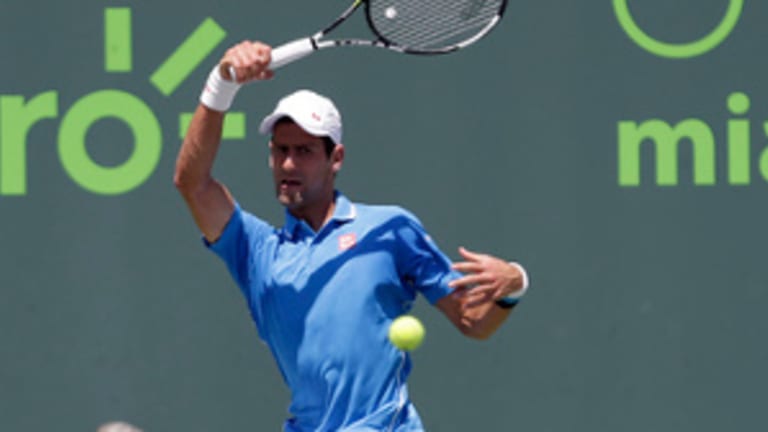All that glitters is not gold, they say. But when Novak Djokovic and Andy Murray face each other, the phrase could be reversed: They’re proof that, in men’s tennis today, all that’s gold(en) does not glitter. Djokovic vs. Murray, as they showed again by pushing each other around the court for two hours and 46 minutes at Crandon Park on Sunday, is lung-busting, meltdown-inducing hard work. These two guys don’t bring out the worst in each other, exactly. They just drive each other a little nuts.
The rivalries between the ATP’s Big 4—Djokovic, Murray, Rafael Nadal, and Roger Federer—have defined the tour’s decade-long Golden Age. Of those match-ups, though, Djokovic vs. Murray has always had less contrast and less edge than the rest. Stylistically, they’re both efficient counterpunchers, so their points don’t have a built-in give-and-take. Emotionally, the duel between these two contemporaries, each of whom will turn 28 next month, lacks an Oedipal, or Fedipal, edge.
It has also, since Murray had back surgery in 2013, ceased to have much of a competitive edge. Coming into Sunday’s final, the fourth they’ve played in Miami, Djokovic had won six straight matches over Murray, and nine of their last 10. As well as Murray had played this week, it was difficult to imagine a repeat of his straight-set victory over Djokovic in the 2009 Miami final.
What we got, when all was said, screamed, and done, and after Djokovic had emerged a winner, 7-6 (3), 4-6, 6-0, was something like a repeat of their Australian Open final from two months ago. As he did in Melbourne, Djokovic edged Murray in a tiebreaker after a see-saw first set, and then served him a bagel in a runaway third set. Once again, Djokovic, the game’s resident Gumby, was stretched to the breaking point; once again, he bounced back into shape when it mattered most.
“It was brutal,” an audibly winded Djokovic told ESPN’s Brad Gilbert a few seconds after the match. “I was prepared for a physical battle, but it’s one thing to prepare, and another thing to experience it on the court. Overall it was a great battle.”

